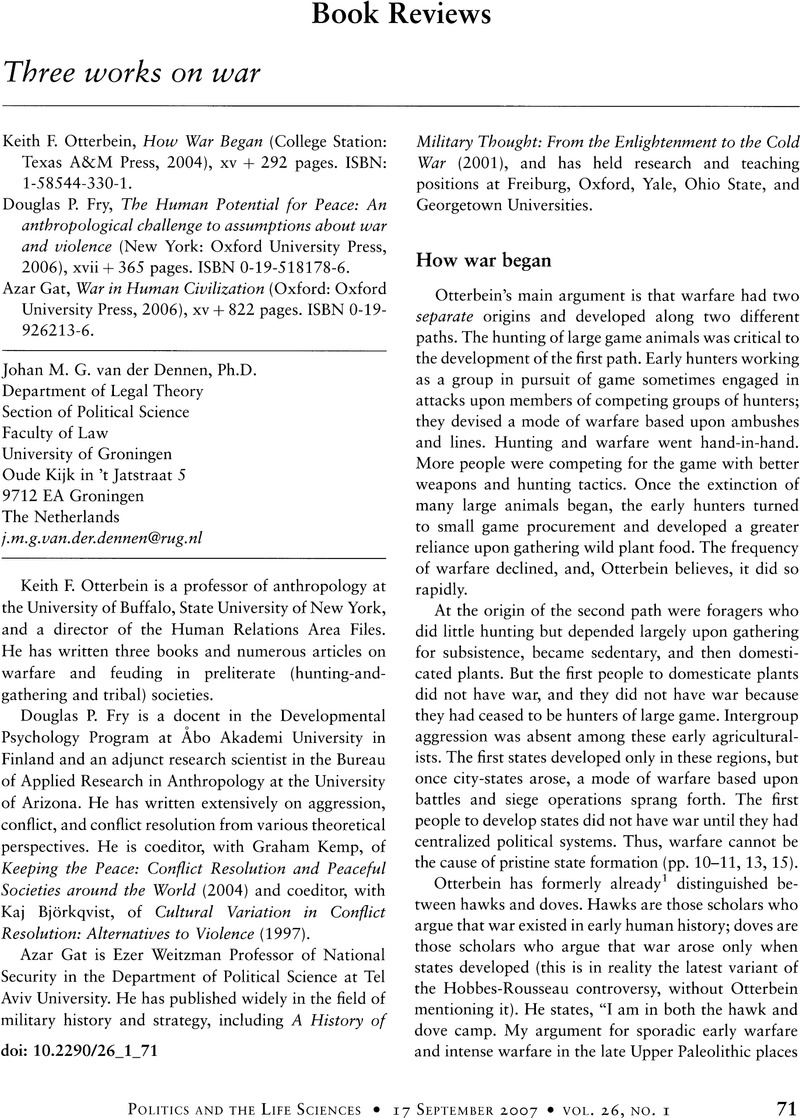Crossref Citations
This article has been cited by the following publications. This list is generated based on data provided by Crossref.
Tullberg, Birgitta S.
and
Tullberg, Jan
2011.
Biology and Politics.
Vol. 9,
Issue. ,
p.
29.
12th August 2024: digital purchasing is currently unavailable on Cambridge Core. Due to recent technical disruption affecting our publishing operation, we are experiencing some delays to publication. We are working hard to restore services as soon as possible and apologise for the inconvenience. For further updates please visit our website: https://www.cambridge.org/news-and-insights/technical-incident

Published online by Cambridge University Press: 17 May 2016
